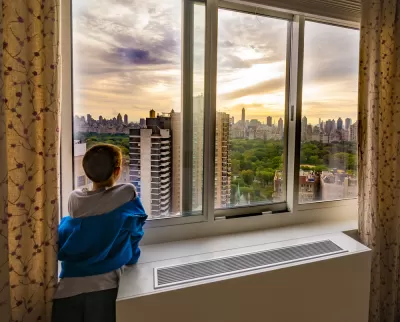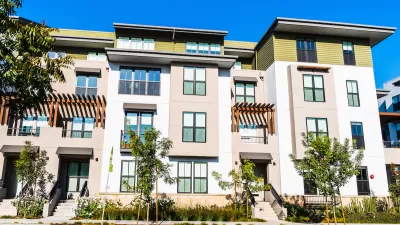If the rent is too damn high, it might still be a good investment.

A working paper published recently by the National Bureau of Economic Research offers reason for optimism for renters paying high costs to live in desirable neighborhoods: that rent premium is a good investment that pays back in job opportunities, quality education, and cultural enmities.
Laura Bliss shares the news of the paper, authored by Esteban Rossi-Hansberg and Adrien Bilal, a Princeton University economics professor and Ph.D student, respectively. Here's how Bliss explains the big conclusion for renters who might feel disheartened by the cost of living in high-demand neighborhoods:
So, when you choose to move to a pricier and amenity-laden city, you’re transferring resources into the future—i.e., saving!—by establishing yourself near opportunities for higher pay and human capital, Rossi-Hansberg and Bilal argue. On the flipside, when you relocate to a community with a lower cost of living but fewer economic advantages, you’re pulling resources into the present that you might have gained in the future—i.e., borrowing.
Bliss notes that the study comes with the caveats that not everyone can afford to make those kinds of investment into the future.
"But, Rossi-Hansberg and Bilal hypothesize, if your location is an asset, it can also be 'sold' when you need the income," explains Bliss. "In other words, if you’ve just lost your job or been hit with a big bill, you can cash in your location by moving to a less-premium one." As detailed in the article, the paper presents evidence that individuals at lower income levels were more likely to "trade in" locations.
FULL STORY: If Location Is an Asset, High Rent Is ‘Saving’ for the Future

Maui's Vacation Rental Debate Turns Ugly
Verbal attacks, misinformation campaigns and fistfights plague a high-stakes debate to convert thousands of vacation rentals into long-term housing.

Planetizen Federal Action Tracker
A weekly monitor of how Trump’s orders and actions are impacting planners and planning in America.

Chicago’s Ghost Rails
Just beneath the surface of the modern city lie the remnants of its expansive early 20th-century streetcar system.

Bend, Oregon Zoning Reforms Prioritize Small-Scale Housing
The city altered its zoning code to allow multi-family housing and eliminated parking mandates citywide.

Amtrak Cutting Jobs, Funding to High-Speed Rail
The agency plans to cut 10 percent of its workforce and has confirmed it will not fund new high-speed rail projects.

LA Denies Basic Services to Unhoused Residents
The city has repeatedly failed to respond to requests for trash pickup at encampment sites, and eliminated a program that provided mobile showers and toilets.
Urban Design for Planners 1: Software Tools
This six-course series explores essential urban design concepts using open source software and equips planners with the tools they need to participate fully in the urban design process.
Planning for Universal Design
Learn the tools for implementing Universal Design in planning regulations.
planning NEXT
Appalachian Highlands Housing Partners
Mpact (founded as Rail~Volution)
City of Camden Redevelopment Agency
City of Astoria
City of Portland
City of Laramie





























